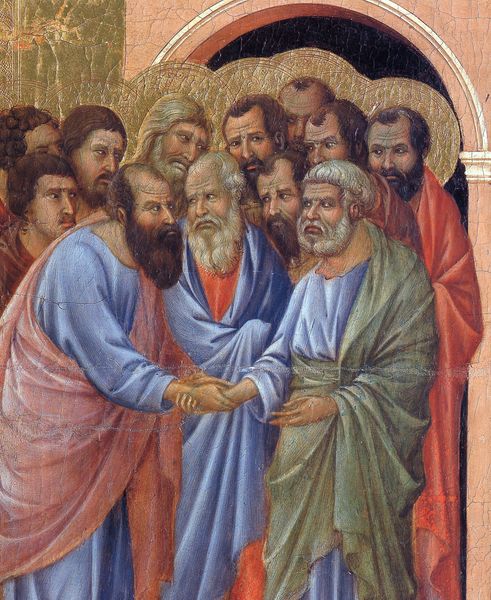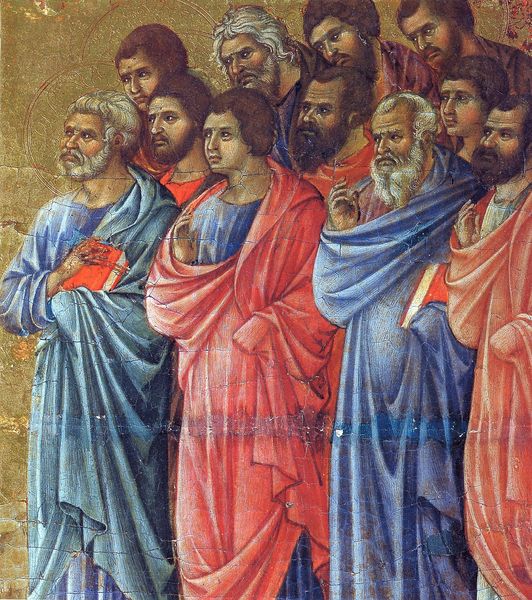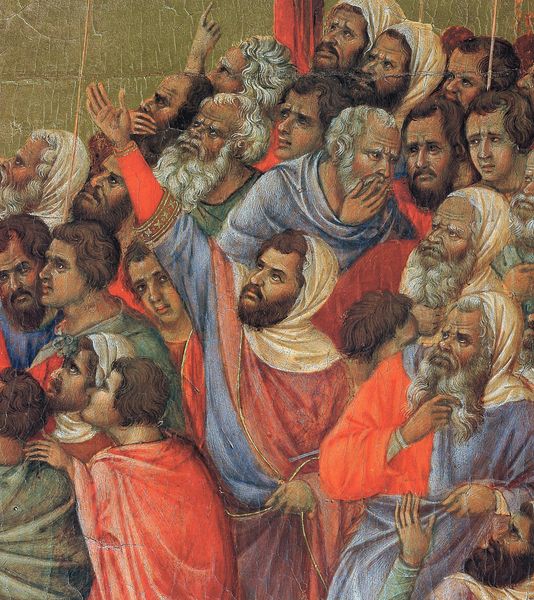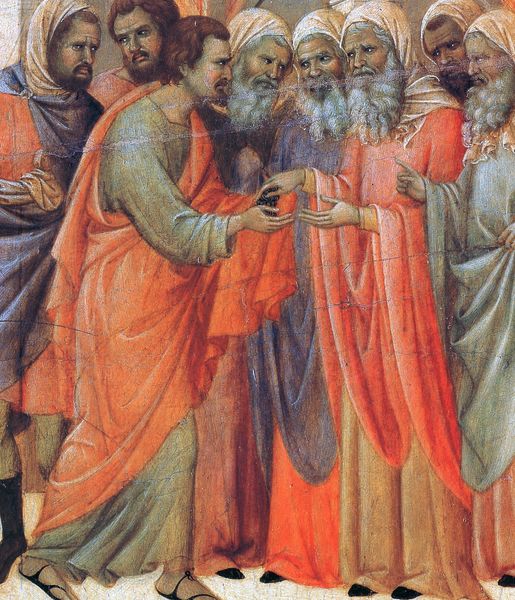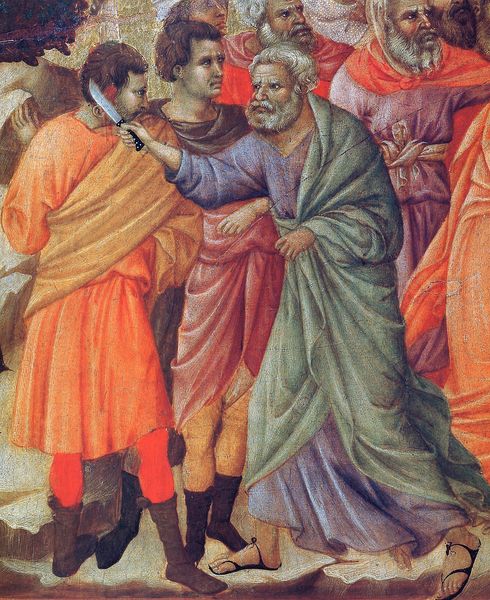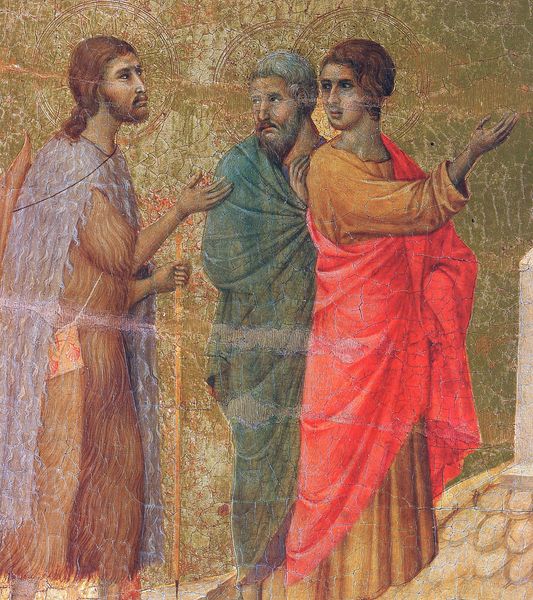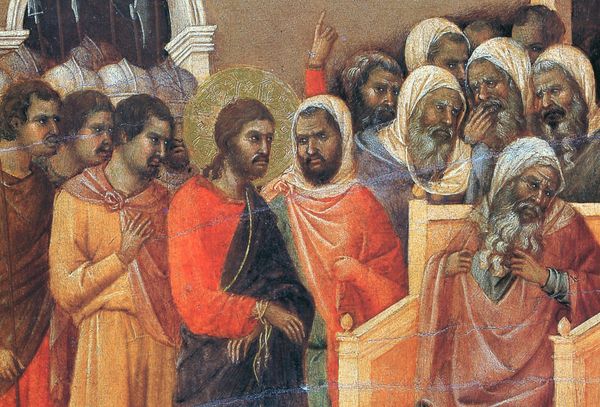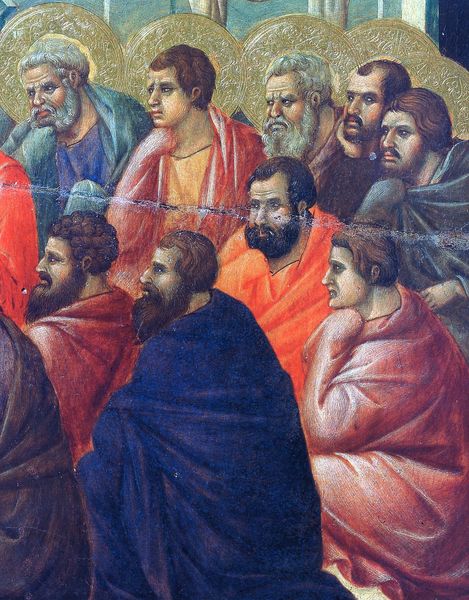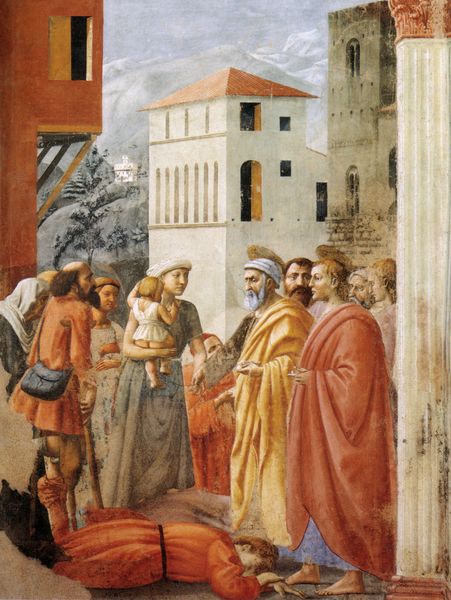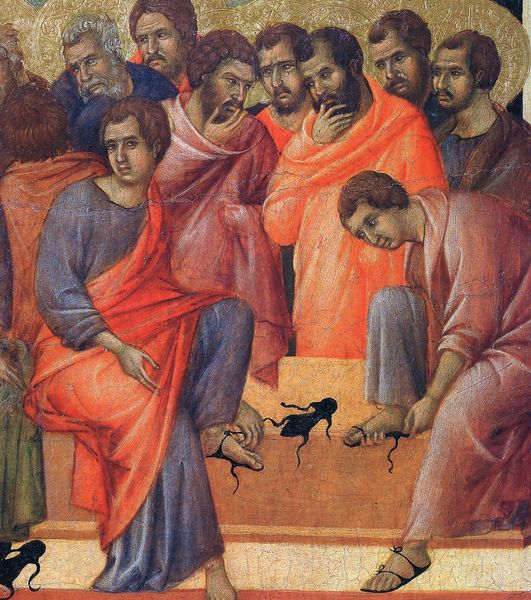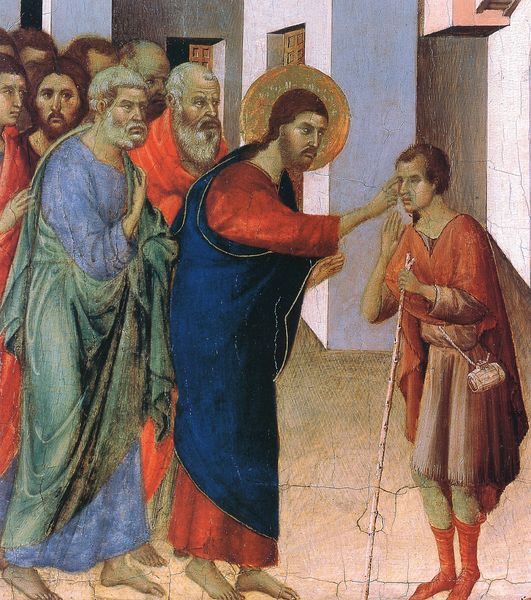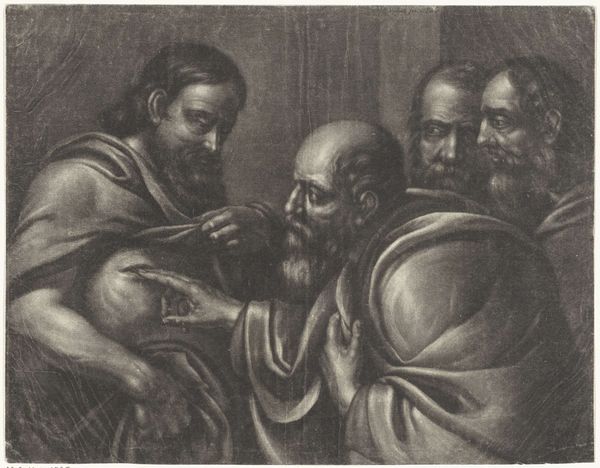
tempera, painting
#
medieval
#
narrative-art
#
tempera
#
painting
#
sienese-school
#
figuration
#
oil painting
#
group-portraits
#
christianity
#
history-painting
#
italian-renaissance
#
christ
Copyright: Public domain
Duccio painted this fragment of “Appearance of Christ to the Apostles” in Siena around the early 14th century, likely using tempera on wood. At the time it was made, the Church held significant cultural and political power. Art served as a visual tool to reinforce religious teachings and express theological ideas. Duccio's use of hierarchical scale, with larger figures representing more important characters, underscores the social structure of the time. The gold leaf background is a cultural reference to Byzantine art, which was seen as a symbol of wealth and status. Duccio's work marked a shift in Sienese art towards more naturalistic representation, challenging the stylized conventions of the time and pushing the boundaries of the established artistic norms. Art historians consult primary sources, such as religious texts, and contemporary writings about art, to better understand the context in which art was made. By taking this approach, we can appreciate how art both reflects and shapes the social, religious, and political landscape of its time.
Comments
No comments
Be the first to comment and join the conversation on the ultimate creative platform.

